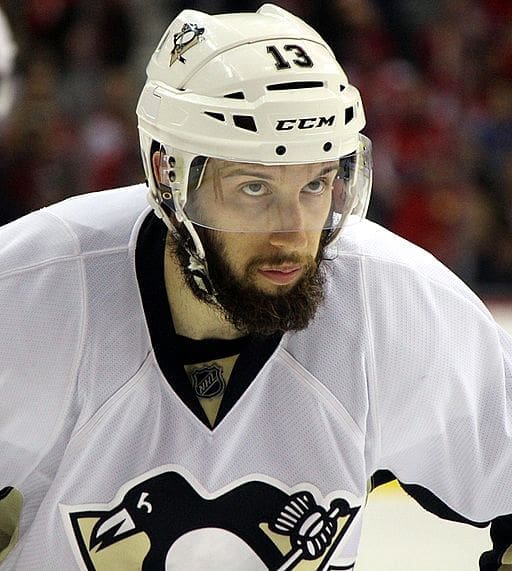Penguins
Bob Grove: Do Penguins Need Faceoff and PK Help?

As the Penguins continue waiting for Matt Cullen to decide whether and where his NHL career will continue next season, the impact of that decision will go beyond the preservation or loss of the leadership he clearly contributed to consecutive Stanley Cup championships. It could also affect the Penguins faceoffs and special teams.
When he hasn’t occasionally moved around in the lineup due to injuries, Cullen has used his time as the Penguins’ fourth-line center to become their most reliable penalty-killing forward and best overall faceoff man. He led the team in short-handed ice time per game among forwards in both regular seasons (2:32 in 2015-16, 2:19 in 2016-17) and won a higher percentage of faceoffs than any of his teammates in both seasons (55.7% in 2015-16, 51.2% in 2016-17).
Had third-line center Nick Bonino not signed a free agent contract with Nashville last month and remained in Pittsburgh, the potential loss of Cullen as a foundational player while shorthanded and in the faceoff circle would have been eased considerably. Cullen’s faceoff winning percentage, while best on the team, was his worst since 2009-10, and Bonino was not only a close second to Cullen in average PK ice time (2:17 per game) but was slightly better on PK draws (40.8% to 40.1%) and set a Pittsburgh record by blocking 99 shots – most ever by a Penguins forward, many coming while short-handed.
Carter Rowney?
While general manager Jim Rutherford has mapped out strategies for acquiring a third-line center, Carter Rowney looks capable of filling Cullen’s role should Cullen decide to retire or sign with Minnesota – or play for Team USA in the upcoming Olympics, an option Tim Benz pointed out on this site. Rowney showed some promise in the circle in a limited sample as a first-year NHL player, winning 48.0 percent of his draws during the regular season and 51.0 percent in the playoffs.
If the Penguins must move forward without Cullen, too, it might seem critical for Rutherford to emphasize faceoff and PK ability in any player he acquires. But should it? As long as he’s on the roster, Carl Hagelin is a given on the PK, and both Rowney and Tom Kuhnhackl could easily get more time, although given his usage last season Kuhnhackl is certainly facing a challenge to hit the lineup regularly next season. Recently signed to a one-way contract, Josh Archibald has potential as a penalty killer, as does Bryan Rust.
How critical, really, are the Penguins faceoffs?
Let’s see what history says.
Since the NHL began tracking faceoff numbers in the 1997-98 season, the 2017 Penguins were far and away the worst faceoff team to win the Cup. They won 47.6 percent of their draws during the regular season, 28th in the league; the previous worst faceoff mark of a champion was the 2009 Penguins (49.1%) while the 2016 Penguins had the fifth-worst mark (50.2%). And while their numbers improved a bit, the Penguins were middle of the pack on draws during the last two playoff runs, finishing seventh in 2016 and eighth in 2017.
So the Penguins are largely an exception: since the lockout, seven of the 12 Cup winners have finished among the top six in draws. Their high-level skill with the puck has offset the Penguins’ faceoff issues, as they’ve led the NHL in shots per game in each of the past two seasons anyway.
Without question, special teams faceoffs have taken on some added importance since the NHL moved that first power play faceoff to the offensive zone. But consider this: of the top six power play teams last season, only one (top-ranked Buffalo, fourth in PP draws) finished better than 15th in power play faceoff winning percentage; of the top five penalty killing teams last season, only one (No. 4 Anaheim, first in PK draws) finished in the top 10 in penalty kill faceoff win percentage. Last season, seven of the NHL’s top nine faceoff teams while on the power play failed to reach the playoffs, while four of the top eight faceoff teams while on the penalty kill also failed to qualify.
Clearly, there’s lots more than winning draws.
The 2017 Penguins were also the lowest-ranked penalty killing team to win the Cup over the last 19 seasons (20th). They finished fifth in 2016 and eight in 2009. The only other Cup champions in that timeframe to finish lower than 11th in penalty killing were the 2006 Hurricanes and 2001 Avalanche (19th each) and the 2011 Bruins (16th).
The Penguins had 5,154 faceoffs in the regular season in 2016-17, most in the league. They were 28th in faceoff winning percentage. The player who takes the majority of their faceoffs, Sidney Crosby, is coming off his worst season in the circle (48.17%) since he was a rookie. Their best faceoff man over the past two seasons may not be back.
Should any of this worry them, given back-to-back Cups? No. They can’t summarily dismiss the need to be better on the penalty kill, although they were perfect in 11 of their last 14 playoff games in 2017. But the Penguins have proved in winning each of their last three Cups that faceoff success, despite what we hear to the contrary, isn’t really required.












